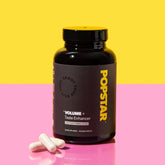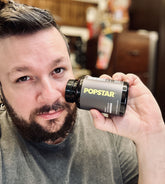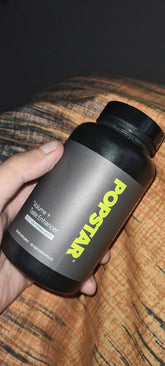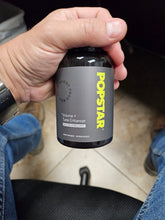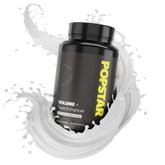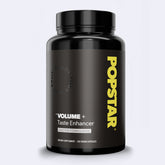Butt plugs are a type of anal device often used to enhance comfort, relieve tension, and explore pleasurable sensations. Though sometimes a topic of taboo, butt plugs have gained broader acceptance as a tool for men’s health and intimate wellness. In this comprehensive guide, we’ll discuss their definition, reasons for use, safety considerations, sizing recommendations, frequently asked questions, and more. Whether you’re new to anal stimulation or looking to deepen your knowledge, this article aims to provide well-researched information presented in a practical manner, balancing technical depth with an engaging, easy-to-read style.
Table of Contents
- What is a Butt Plug?
- A Brief History of Butt Plugs
- Why Do People Use Butt Plugs?
- Safety and Precautions
- Common Materials
- Choosing the Right Size and Fit
- Tips for Comfortable Insertion
- Frequently Asked Questions
- Potential Benefits
- Potential Risks
- Conclusion
- References
What is a Butt Plug?
A butt plug is an anal device specifically designed to be inserted into the rectum. Each butt plug typically has three defining features: a tapered tip for ease of insertion, a bulbous body that rests within the anal canal, and a flared base that prevents the device from traveling deeper than intended. This flared base is crucial for safe usage, as it ensures the toy remains externally accessible and easily removable. Butt plugs can range from small, beginner-friendly sizes to more substantial shapes and dimensions for experienced users.
Men’s health experts often emphasize the potential benefits of anal play for relaxation of the pelvic floor muscles and for intimate pleasure. Because the prostate is accessible through the anal canal, many men find that butt plug usage can stimulate the prostate gland, offering heightened sensations. However, it’s important to understand the safety considerations and best practices before using any butt plug, ensuring a comfortable and secure experience.
Butt plugs may be composed of many different materials, including silicone, glass, stainless steel, or even medical-grade plastic. Each material has its unique properties—some conduct temperature effectively, while others are more flexible and forgiving. Beyond their sexual health aspect, medical professionals sometimes use anal devices to help with conditions such as sphincter relaxation or pelvic floor training, though such usage should always be done under professional guidance.
A Brief History of Butt Plugs
The origins of butt plugs and other anal devices go back centuries, though their design and composition have evolved significantly over time. Historically, various cultures have recognized the role of anal stimulation, though it was often taboo to discuss openly. Early devices were rudimentary, constructed from more natural materials and sometimes used in medical contexts for constipation or to address certain anorectal issues. However, modern butt plugs have improved dramatically in both safety and comfort due to advanced manufacturing processes and higher standards for materials.
In the early 20th century, some advertisements marketed anal devices for physical wellness, recommending them to address issues like hemorrhoids or constipation. Over time, these devices began appearing in adult novelty stores, marketed primarily for sexual exploration. A shift in attitudes toward sexual health, coupled with increased awareness of prostate health, has further popularized butt plugs among men seeking new ways to maintain and enhance pleasure and well-being. Today, butt plugs are widely recognized both as intimate wellness tools and as sexual devices, with acceptance growing as knowledge about their potential benefits spreads.
Despite social stigma in certain circles, continued education and open dialogue have made butt plug usage more widely accepted. Modern men’s health resources often address anal play as a legitimate avenue for exploration, highlighting potential benefits such as relaxation, enhanced sexual sensation, and improved pelvic floor health. From a historical viewpoint, butt plugs have transcended mere novelty, establishing themselves as a recognized product in the realm of sexual and digestive health.
Why Do People Use Butt Plugs?
The reasons for using a butt plug vary from curiosity about anal stimulation to proactive men’s health strategies and stress relief. Below are some of the most commonly cited reasons people, particularly men, incorporate butt plugs into their intimate routines:
- Prostate Stimulation: Many men experience heightened sexual pleasure when the prostate gland is stimulated. A butt plug’s placement is ideal for gentle and consistent pressure on the prostate area.
- Pelvic Floor Relaxation: Butt plugs may help relax pelvic floor muscles, which can aid in addressing certain types of pelvic pain or tension.
- Enhanced Arousal and Foreplay: When used during foreplay, a butt plug can introduce a new dimension of sensation that can increase overall sexual pleasure.
- Preparation for Anal Intercourse: Butt plugs are often used as a preparatory step for anal intercourse, helping the anal sphincter muscles to relax and making penetration more comfortable.
- Novel Sensation and Exploration: Some individuals are simply curious and want to explore new erogenous zones. Butt plugs can offer a pleasantly different type of stimulation compared to traditional sexual activities.
In the context of men’s health, many who explore anal play do so to better understand their bodies and activate additional sources of pleasure. When approached with proper knowledge, lubrication, and gradual progression of size, butt plugs can become a valuable tool for self-discovery and intimate well-being.
Safety and Precautions
Butt plugs are generally safe when used correctly. However, improper usage can lead to discomfort or injury. Here are the primary safety considerations:
- Flared Base: Always choose a device with a sufficiently flared base to prevent it from slipping entirely into the rectum.
- Lubrication: Adequate lubrication is crucial. The anal canal does not self-lubricate, so using a high-quality water-based or silicone-based lubricant reduces friction and risk of tearing.
- Material Safety: Opt for body-safe materials such as medical-grade silicone, borosilicate glass, or stainless steel. Avoid porous materials that can harbor bacteria.
- Hygiene: Cleaning the butt plug before and after each use with warm water and mild soap or a specialized sex toy cleaner is essential.
- Slow Progression: Beginners should start with smaller plug sizes before gradually moving to larger dimensions. This approach helps prevent discomfort and reduces the chance of injury.
- Medical Considerations: Consult a healthcare provider if you have underlying health conditions such as hemorrhoids, anal fissures, or inflammatory bowel disease. They can provide personalized guidance on safe usage.
Additionally, avoid leaving a butt plug inserted for extended periods without taking breaks. Blood flow restriction and potential for bacterial growth can increase over long durations. Listening to your body is crucial; if you feel pain or discomfort, discontinue use and consult with a medical professional if necessary.
Common Materials
Butt plugs are manufactured from a range of materials, each offering unique characteristics in terms of texture, flexibility, weight, and maintenance. Below are some standard options:
- Silicone: Medical-grade silicone is highly popular for its non-porous nature, softness, and easy cleaning. It warms quickly to the body’s temperature and often provides a comfortable, pliable feel.
- Glass (Borosilicate or Soda-Lime): Glass butt plugs can be heated or cooled for temperature play. They are smooth, non-porous, and easy to sanitize. They provide a firmer, more rigid sensation compared to silicone.
- Stainless Steel: Metal plugs are heavier and hold temperature well, offering a unique experience that some users find appealing. Stainless steel models are also non-porous, making them easy to clean.
- ABS Plastic: Rigid plastic is lighter in weight than metal and sometimes included in smaller, more affordable plugs. Look for body-safe, phthalate-free variants.
Whatever material you choose, ensure it’s certified body-safe with no harmful additives. Proper care is essential: always follow the specific cleaning and upkeep instructions recommended for that material. Choosing a reputable manufacturer is one way to ensure you’re getting a reliable, body-safe product.
Choosing the Right Size and Fit
Size considerations encompass both length and girth. For those new to anal play, starting with a smaller diameter reduces the likelihood of discomfort.
- Length: A plug’s insertable length can vary from very short to several inches. Beginners generally prefer a length of 2-3 inches. As comfort increases, a slightly longer or differently shaped plug might be explored.
- Diameter/Girth: Girth is a critical factor. Minimal diameters in the range of 0.75-1.0 inch are often recommended for beginners. Advanced users may opt for diameters beyond 1.5 inches depending on comfort and experience.
- Neck Design: The neck region, located just above the flared base, can influence comfort during longer wear. A narrower neck often allows the sphincter to rest more comfortably.
- Base Shape: While all butt plugs should have a flared base, some bases are more elongated for a discreet fit between the buttocks, while others are round or ornamented. Choose a base that feels comfortable for extended use.
It’s advisable to experiment with different sizes and shapes to determine personal preferences. Some individuals prefer thinner, more tapered plugs, while others enjoy a fuller, more pronounced sensation. Ultimately, the key to comfort lies in a combination of correct sizing, adequate lubrication, and mindful insertion.
Tips for Comfortable Insertion
Inserting a butt plug for the first time can provoke anxiety, but with proper technique and preparation, it can be a smooth and enjoyable process:
- Relaxation: Begin by finding a comfortable position—lying on your side, crouching, or standing with one leg elevated can help. Take steady, calm breaths to ease muscle tension.
- Generous Lubrication: Apply a water-based or silicone-based lubricant to both the butt plug and the anal opening. Reapply as needed throughout your session.
- Gentle Pressure: Slowly and gently push the tapered tip into the anus. Avoid forcing entry, as that can cause microtears or discomfort. If you feel pain, pause and add more lubricant or try to relax further before proceeding.
- Incremental Insertion: Insert the plug a bit at a time, allowing your muscles to adapt to the new sensation. Once the bulb is fully inside, the sphincter should rest comfortably around the neck.
- Listen to Your Body: If at any point you feel persistent pain, stop inserting and consider switching to a smaller plug or continuing after a more thorough relaxation period.
Taking things slowly is central to a comfortable experience. Over time, you’ll become more attuned to your body’s responses, enabling smoother insertion and more extended, comfortable use opportunities.
Frequently Asked Questions
Are butt plugs safe for long-term wear?
While certain individuals may wear a well-fitted butt plug for extended periods, it’s wise to take breaks. Wearing a butt plug continuously without pause can lead to reduced blood flow and increase the risk of irritation or infection. Removing the toy periodically to clean both the plug and the area, reapplying lubricant, and evaluating any discomfort is advisable.
Can butt plugs help with prostate health?
Some men find that gentle and regular prostate stimulation may enhance sexual satisfaction and even help relieve certain prostate-related discomforts. However, scientific consensus on long-term prostate health benefits is not entirely definitive. If you have a pre-existing prostate condition, consult with a healthcare provider before using a butt plug for this purpose.
Can a butt plug cause incontinence?
When used responsibly, butt plugs do not typically cause incontinence. Overstretching or using a size far beyond your comfort level could potentially strain the anal sphincter, but this scenario is uncommon, especially when choosing appropriate sizes and practicing correct techniques. Incontinence risk is minimal when you follow proper guidelines and do not force oversized plugs.
Do I need a special lubricant?
While you don’t need a specialized formula, it’s highly recommended to use high-quality water-based or silicone-based lubricants. Oil-based lubricants, such as coconut oil, can sometimes degrade certain materials (like latex) and may be more challenging to clean. Always check the compatibility of the lube with the butt plug material.
How do I clean a butt plug?
Cleaning methods vary based on material. Silicone, glass, and stainless steel plugs can generally be washed with warm water and mild soap or a specialized toy cleaner. Some silicone and steel models can be boiled for deeper sterilization. Always check the manufacturer’s guidelines. Thorough cleaning is vital to avoid bacterial buildup.
Is there a recommended position for using a butt plug?
Many find lying on their back with knees bent or lying on the side with knees slightly drawn up to be comfortable starting positions. However, the chosen position can be entirely based on personal comfort and lifestyle. Experiment to find what works best for you.
Are there any specific butt plugs designed for men?
While most butt plugs are unisex, some designs cater specifically to prostate stimulation by featuring angled tips or shapes that target the prostate region. Omitting gender labels, any anatomically appropriate design can still provide men with significant prostate and anal stimulation.
Can I use a butt plug to prepare for anal intercourse?
Yes, butt plugs are frequently utilized for this purpose. They help relax the anal sphincter gradually and allow the user to adapt to a sensation of fullness, rendering subsequent anal intercourse potentially more comfortable and pleasurable.
What if I feel excessive pain?
Stop usage immediately if you experience persistent or sharp pain. Excessive pain may indicate that the plug is too large, insufficiently lubricated, or inserted incorrectly. Taking a break, using more lubrication, and focusing on relaxation can alleviate minor discomfort. If the pain persists, consult a medical professional.
Do butt plugs interfere with bowel movements?
Short-term butt plug usage typically does not affect bowel movements. However, wearing a plug excessively may cause temporary changes in bowel routines, particularly if it is worn during times you would normally use the restroom. Practice good hygiene and do not force usage when you feel the urge for a bowel movement.
Can I use my butt plug with someone else?
Ideally, sex toys, including butt plugs, should be considered personal items. Sharing plugs can increase the risk of transmitting infections unless they are sterilized between uses. If you do share, take thorough sanitization measures and consider using a new condom-type cover if applicable.
What is the best way to store a butt plug?
Store butt plugs in a clean, dry environment. Some brands provide a pouch or case. If not, you can use a small storage bag or a dedicated container. Keep them away from direct sunlight and avoid letting them come into contact with other materials that could degrade the surface, such as certain plastics or latex products.
Potential Benefits
Butt plugs can confer a variety of benefits reaching beyond simple pleasure. For men particularly, these impacts may manifest in ways that enhance both psychological and physical health:
- Increased Sexual Awareness: Exploring anal sensations fosters a deeper connection with one’s sexual responses, broadening the scope of pleasure.
- Prostate Play: Gentle pressure on the prostate can yield profound sensations and potentially improve comfort for those seeking relief from mild pelvic tension.
- Pelvic Floor Conditioning: Using a butt plug, especially in tandem with pelvic floor exercises, can help strengthen and control the relevant muscles.
- Stress Relief: Sexual exploration can alleviate stress and potentially improve mood. Prostate stimulation in particular is sometimes reported to provide deeply relaxing sensations.
- Confidence and Body Positivity: Gaining comfort with one’s own body often correlates with improved self-esteem and an overall more positive body image.
While these benefits can be valuable, they’re often contingent on a slow, educated approach to usage. Proper technique, lubing, and toy maintenance are prerequisites for a comfortable and beneficial experience.
Potential Risks
Responsible and informed use typically minimizes the risks associated with butt plug usage. However, no activity is without potential drawbacks. Here are a few primary concerns:
- Tears or Fissures: Inadequate lubrication or hurried insertion can result in small tears in the anal canal. These can be painful and may require specialized treatment if severe.
- Infection: Poor hygiene—insufficient cleaning before or after use—can lead to bacterial buildup, increasing the risk of infection. Always clean thoroughly to minimize this risk.
- Allergic Reactions: Some individuals are sensitive to certain toy materials or lubricants. Watch for inflammation, itching, or redness if you’re uncertain about material compatibility.
- Overly Prolonged Wear: Wearing a butt plug excessively can impede blood flow and increase potential for infection and tissue irritation. Take regular breaks, remove and clean the device intermittently.
- Underlying Health Conditions: Conditions such as hemorrhoids, rectal prolapse, or proctitis may not pair well with anal penetration. Seek medical advice if you have any of these diagnoses.
Monitoring comfort levels during use and adhering to best practices can significantly reduce these risks. Should pain or bleeding occur, discontinuing use and consulting with a healthcare professional is strongly advised.
Conclusion
Butt plugs occupy a unique space in men’s health, bridging the gap between pleasurable exploration and potential therapeutic benefits. When used properly, they can enhance prostate stimulation, help relax pelvic floor muscles, and add a new dimension to one’s intimate life. As with any tool or practice related to physical well-being, a measured approach, adequate education, and attention to safety guidelines are paramount.
Taking the time to research the right material, shape, and size for your body, along with using proper techniques and lubricants, will pave the way for safe and rewarding experiences. Should uncertainty arise—whether about health concerns, technique, or comfort—it is well worth consulting a healthcare provider or a certified sex educator. Anal play need not be intimidating; with awareness and attention to detail, it can become a fulfilling part of a comprehensive men’s health routine.
References
- Pizza, F., & Resnick, M. (2019). A Review of Anal Toys in Sexual Health. Journal of Men’s Health, 16(2), 145-152.
- Stein, M., & Reitz, J. (2020). Pelvic Floor Muscles: Assessment and Therapeutic Interventions. Current Urology Reports, 21(12), 54-61.
- Hensley, R., Cheung, M., & Carver, B. (2021). Male Prostate Stimulation: Anatomical and Clinical Perspectives. Sexual Medicine Reviews, 9(4), 621-631.
- World Health Organization. (2022). Sexual and Reproductive Health and Research: Tips for Safe Anal Play. https://www.who.int/health-topics/sexual-health
